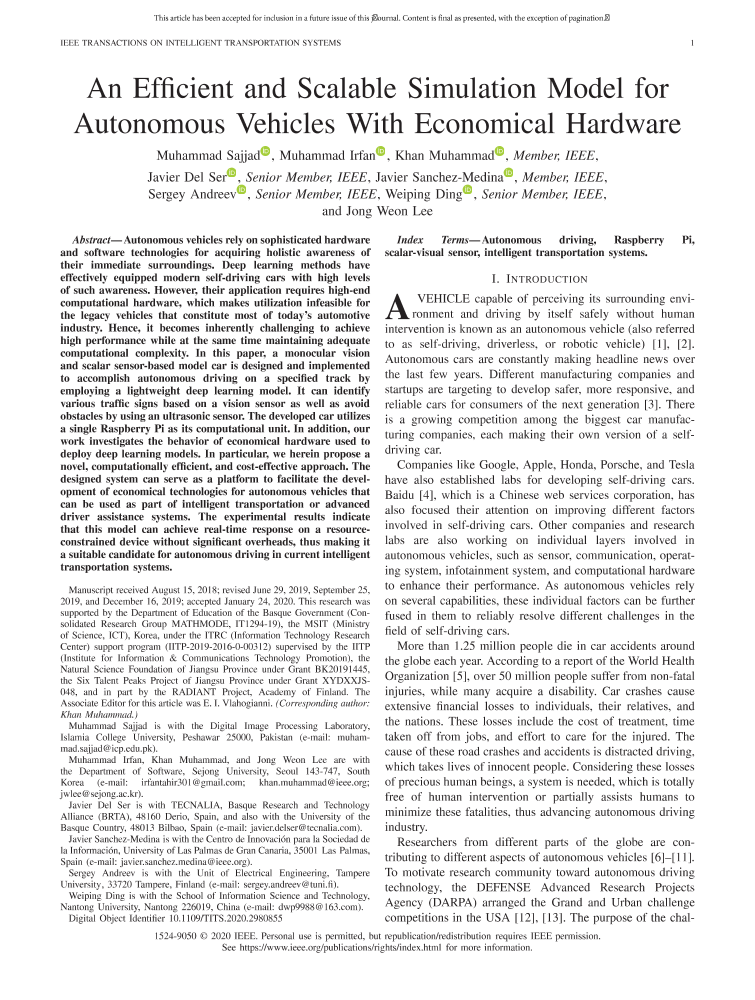I. Introduction
A vehicle capable of perceiving its surrounding environment and driving by itself safely without human intervention is known as an autonomous vehicle (also referred to as self-driving, driverless, or robotic vehicle) [1], [2]. Autonomous cars are constantly making headline news over the last few years. Different manufacturing companies and startups are targeting to develop safer, more responsive, and reliable cars for consumers of the next generation [3]. There is a growing competition among the biggest car manufacturing companies, each making their own version of a self-driving car.



